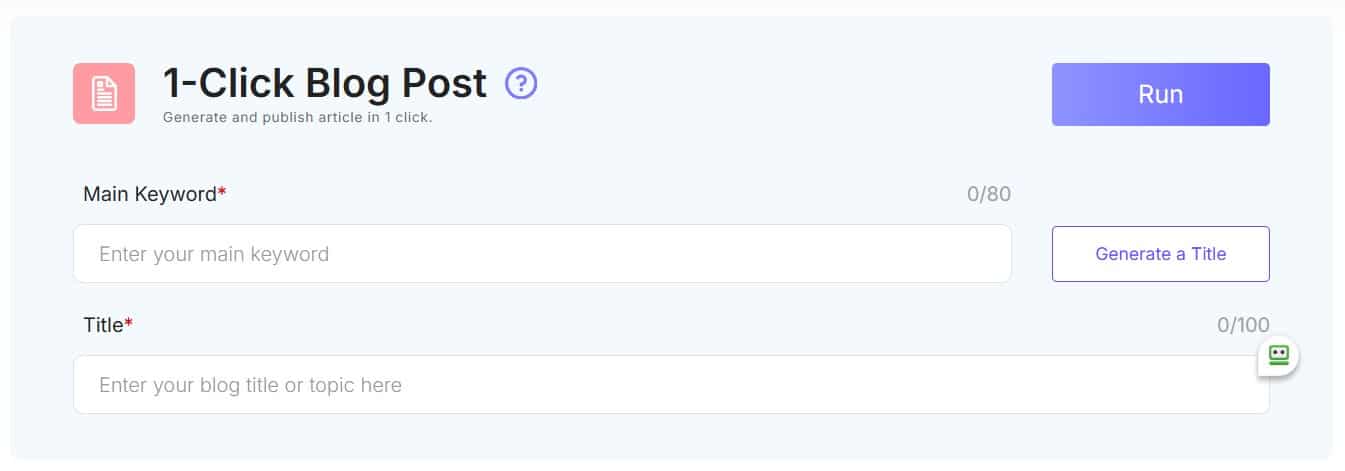 Is CapCut worth it? In my opinion, yes, it is. I’ve used CapCut for most of 2024/2025 and find it one of the easiest video editing platforms I have ever used.
Is CapCut worth it? In my opinion, yes, it is. I’ve used CapCut for most of 2024/2025 and find it one of the easiest video editing platforms I have ever used.
If you’ve been exploring video editing apps, you’ve likely come across CapCut. It’s one of the most popular tools for creating short-form content, offering both a free version and a Pro upgrade with advanced features.
CapCut is worth it if you want watermark-free exports, 4K quality, and AI tools that save time. However, the free version may be sufficient if your editing needs are simple.
You’ll find that CapCut appeals to a wide range of content creators, from casual users making quick clips to those producing polished content for business or social platforms. The free version provides everything needed for basic editing, while CapCut Pro adds premium effects, cloud storage, and professional controls that rival those of desktop software.
This article guides you through what CapCut offers, compares the free and paid versions, outlines the associated costs, and determines whether upgrading is a sensible option for your goals. By the end, you’ll know exactly which option best fits your content creation workflow.
What Is CapCut and Who Is It For?
CapCut is a video editing app developed by ByteDance, the company behind TikTok. It combines easy-to-use tools with advanced editing options, making it suitable for both casual users and those seeking professional-quality videos.
Its flexibility, accessibility, and range of features make it a strong choice for anyone creating content across social platforms.
Overview of CapCut’s Features
You can use CapCut for quick edits and more advanced projects. The app features trimming, cutting, and multi-layer editing, as well as transitions, filters, and text animations. These tools enable you to create polished videos without requiring complex desktop software.
Is CapCut worth it for the free version? It gives you access to essential editing tools. You can export videos in up to 1080p, though they include a watermark. If you want higher resolution and watermark-free exports, CapCut Pro unlocks 4K support, HDR colour, and advanced tools like motion tracking and keyframing.
The main issue I encountered with the free version was the lack of access to captions. It used to be free, which is annoying.
CapCut Premium also offers AI-powered features that save time. Examples include automatic captioning, background removal, and smart templates designed for social media. These tools are invaluable if you post regularly and want to speed up your editing workflow.
Ideal Users: Content Creators and Professionals
Is CapCut worth it if you’re a content creator? Yes, CapCut is perfect for your needs. Social media videos require speed, efficiency, and a professional look, and the app provides all three. You don’t need professional editing experience to achieve a polished result.
For professional users, CapCut Pro adds value by removing watermarks and enabling 4K exports. That matters if you’re producing brand videos, client projects, or marketing content where presentation quality is essential.
Casual users may find the free version enough for personal projects. However, if you’re posting regularly on TikTok, Instagram, or YouTube, the Pro plan helps you stand out with sharper visuals and access to more creative assets.
Supported Platforms and Accessibility
You can access CapCut on mobile, desktop, and the web. The mobile app is compatible with both iOS and Android, allowing you to edit videos directly from your phone. For more detailed editing, the desktop version is available on Windows and macOS.
I’ve never used CapCut on my mobile, because, for me, I think it would be too fiddly with my old eyes.
If you prefer not to install software, the browser-based version lets you edit online. This option is helpful if you want to work across different devices without manual file transfers.
CapCut also offers cloud storage and syncing with a Pro subscription. That means you can start editing on one device and continue on another without losing progress. It’s a practical feature if you manage projects across multiple platforms.
CapCut Free vs CapCut Pro: Key Differences
Is CapCut worth it for the free or paid version? Well, CapCut offers a robust set of editing features at no cost, but the Pro upgrade provides advanced tools, increased storage, and enhanced output options. The main differences come down to editing flexibility, AI-driven features, and the quality of your finished videos when exported.
Core Editing Tools and Capabilities
With the free version, you can easily trim, cut, merge, and layer clips. You also get access to hundreds of fonts, simple transitions, and an extensive library of filters and templates. These tools are more than enough for short-form content, especially if you’re making TikTok or Instagram videos.
CapCut Pro expands on this by unlocking all transitions, premium filters, and more advanced text effects. You also get 100GB of cloud storage compared to just 1GB in the free plan, which makes it easier to manage larger projects.
Another difference is in captioning. While you can add captions manually in the free version, Pro gives you auto-captioning (with hundreds of templates to choose from) and bilingual support. That saves time if you regularly create content with spoken dialogue.
AI-Powered Editing Tools
Both versions include AI features, but Pro offers a broader range. In the free version, you can utilise tools such as background removal, basic AI colour correction, and text-to-image generation. These are helpful for quick edits without needing external software.
CapCut Pro, however, adds script-to-video functionality, product URL integration to ads, and AI-driven ad script generation. These tools speed up content creation, especially if you’re making promotional or professional videos.
Another Pro-only benefit is batch editing and photo restoration, which can be particularly helpful when editing multiple clips or working with older images. If you want AI to handle more of the creative workload, the Pro subscription gives you much more flexibility.
Watermark and Export Quality
When you export a video with the free version, a CapCut end-screen logo gets added by default. You can remove it manually before saving, but some users find this extra step inconvenient. Pro removes this limitation entirely, so your videos come out clean every time.
In terms of quality, both free and Pro allow exports up to 4K resolution. The difference lies in GIF exports: free users are limited to 240p, while Pro users can export at higher resolutions, such as 320p and 640p.
If you need professional-quality output without watermarks and with more control over formats, the CapCut Pro subscription is the more practical choice.
CapCut Pro Pricing and Value
CapCut Pro offers a paid upgrade that focuses on affordability, creative flexibility, and smoother workflows. The main differences primarily revolve around subscription costs, access to premium assets, and the inclusion of cloud storage.
Subscription Costs and Plans
CapCut Pro offers two subscription options: $9.99 per month or $89.99 per year (effective September 2025). The yearly plan works out cheaper if you plan to use it long term, saving you a few months’ worth of payments.
Compared with other editing tools, this pricing is competitive. Adobe Premiere Rush, for example, costs about the same per month, while Final Cut Pro requires a one-off payment of several hundred pounds.
You don’t need to commit straight away. CapCut allows you to try the free version first, then upgrade only if you find the advanced features useful. This flexibility makes it easier to decide whether the subscription fits your editing needs.
Premium Assets and Effects
One of the biggest draws of CapCut Pro is the library of exclusive templates, effects, and filters. You gain access to thousands of trending styles designed for TikTok, Instagram Reels, and YouTube Shorts. These can save you time when creating content that aligns with current trends.
The Pro version also removes the watermark that appears in the free app. If you publish videos for clients or a growing audience, this detail makes your work look more professional.
You also unlock a wider range of music and sound effects without copyright issues. That means you can focus on editing without worrying about takedown notices or muted audio on social platforms.
Cloud Storage and Collaboration
CapCut Pro includes 100GB of cloud storage for your projects. That lets you back up your work securely and pick up editing on another device without manually transferring files.
For teams or collaborators, cloud storage makes sharing projects easier. You can store drafts, send links, and allow others to review or continue editing without needing to export large files.
If you already rely on Google Drive, Dropbox, or iCloud, you might not need this feature. However, having storage built directly into the app can simplify your workflow by keeping everything in one place.
Is CapCut Worth It for Your Video Editing Needs?
CapCut gives you a choice between a free editor with basic tools and a paid upgrade that unlocks advanced features. Whether you should pay depends on how often you edit, the quality you expect, and the importance of professional touches for your videos.
Who Should Upgrade to CapCut Pro?
You should consider CapCut Pro if you frequently publish content and want your videos to look polished without requiring additional software. The Pro plan removes watermarks, supports 4K exports, and includes AI tools such as auto-captioning, background removal, and motion tracking.
Creators who rely on short-form platforms, such as TikTok, Instagram, or YouTube Shorts, benefit the most. The ability to add premium video effects, music, and templates makes your clips stand out. If you post for business, branding, or professional projects, the investment is easier to justify.
When the Free Version Is Enough
If you edit casually or only share videos with friends, the free version should meet your needs. You still get an intuitive interface, trimming tools, transitions, and filters. Exports are limited to 1080p and include a watermark, but this may not be a concern for personal projects.
For occasional editing, you don’t need advanced AI features or premium effects. Basic text overlays, standard transitions, and simple colour adjustments work fine for everyday clips. You can still create engaging short videos without subscribing.
The free version is a great way to test CapCut before deciding if you need the premium version. If you later find yourself frustrated by watermarks, limited resolution, or missing effects, upgrading becomes a clearer choice.
Alternatives and Final Thoughts
CapCut isn’t your only option. If you want quick, AI-driven editing for repurposing long videos, tools like OpusClip can save time. For desktop-level control, software such as Adobe Premiere Pro or DaVinci Resolve offers more depth, though with a steeper learning curve.
If you mainly edit on your phone, CapCut remains one of the most accessible apps. Pro unlocks premium video effects, advanced editing controls, and cloud syncing, while the free version keeps things simple. Choosing between them depends less on the app itself and more on how much editing you actually do.
Note: Be aware that CapCut can consume a significant amount of space on a laptop. Then, thankfully, I discovered how to change that. I freed up 18GB by clearing the cache in CapCut settings. I do that each time now, and I delete my videos from the CapCut library.
Disclaimer: This post contains affiliate links. I may earn a commission if you sign up for a program or make a purchase using my link.
FAQs
Is CapCut Suitable for Beginners?
Absolutely. CapCut is one of the easiest video editing tools I have ever used. Davinci is challenging to learn, and other programs are expensive and complex. The CapCut interface isn’t overwhelming, and I found it fairly intuitive to learn how to do basic editing, use templates, stickers, transitions, and captions.
What Are The Pros And Cons Of Using CapCut for Video Editing?
You get an intuitive interface, plenty of filters, text tools, and audio options, even in the free version. It’s easy to learn, making it suitable for those just starting out.
On the downside, the free version adds a watermark, limits export quality, and lacks some advanced controls. Pro offers more, but at a cost.
Can Capcut Be Used Effectively For Creating YouTube Content?
Yes, you can use CapCut to produce YouTube videos, especially if you create short-form content, such as tutorials or vlogs. The app supports high-resolution exports and provides tools for trimming, adding transitions, and including subtitles.
However, if you need advanced colour grading or multi-track editing for long-form projects, you may find it limited compared to desktop editors.
How Does Capcut Ensure the Safety and Privacy of Its Users?
ByteDance developed CapCut, which is the company behind TikTok, so data handling follows similar policies. You should review its privacy policy closely to understand what information is collected.
CapCut may store basic user data and usage activity; however, there have been no significant reports of unsafe practices specific to the app. Using official app stores helps reduce risks.
Is the Premium Version of CapCut Worth the Investment?
CapCut Pro removes the watermark, unlocks higher export quality, and adds advanced features like keyframe animation and a larger effects library. If you publish regularly or need professional-looking edits, the subscription can save time and add polish.
One irritating niggle I have is that, for a long time, the free version provided access to automated captions. Then, CapCut took that away. I felt a bit cheated as the free version was perfect. Still, I’m paying £10.99 per month, so it’s not a massive investment for the convenience.
If you only edit occasionally or create casual clips, the free version is usually enough.
What Are Some Good Alternatives To CapCut For Video Editing?
If you want desktop-level tools, DaVinci Resolve and Adobe Premiere Pro are strong options, though they come with steeper learning curves.
For mobile-friendly editing, you might try InShot, VN Video Editor, or Kinemaster, which also offer free and paid versions with varying levels of control.
Does Capcut Offer the Same Level of Functionality on PC as on Mobile Devices?
CapCut has a desktop version, but its most powerful features are still available on mobile. The PC version covers essential editing tasks but may not feel as smooth or complete as the mobile app.
If you prefer editing on a computer, you might find other desktop editors more capable for advanced projects.






